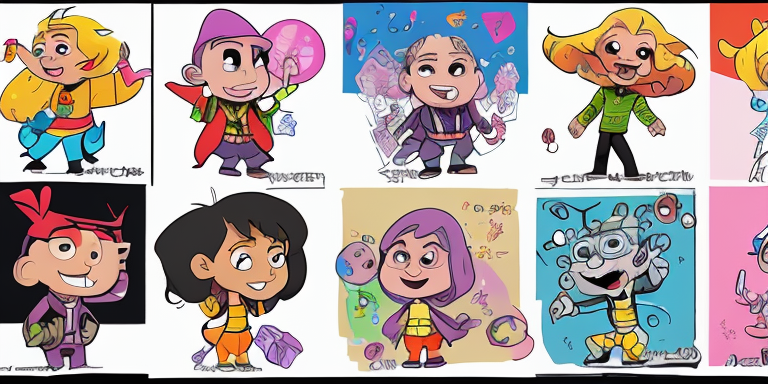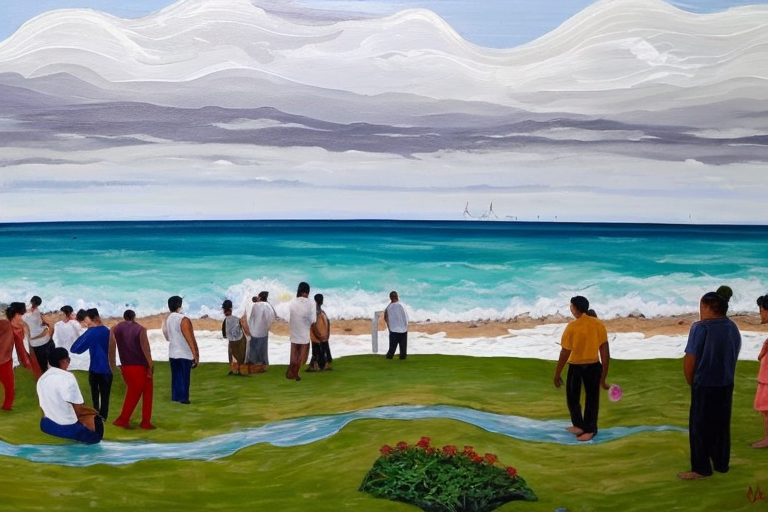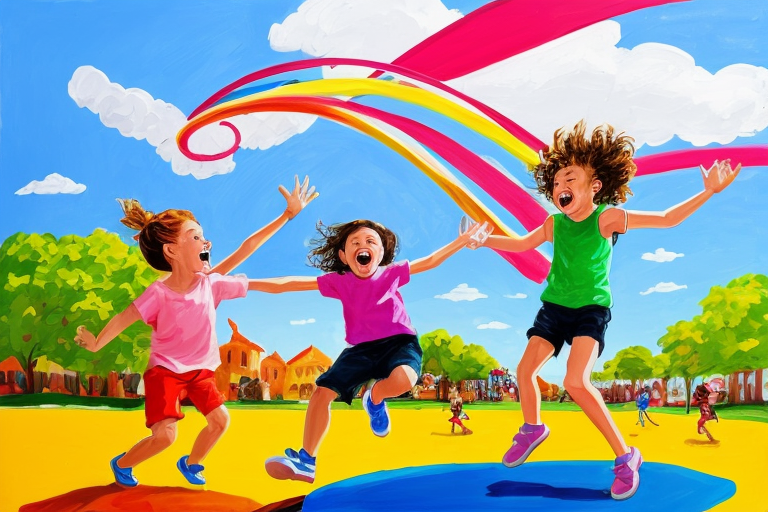The Enduring Legacy of Cartoon Characters
Cartoon characters have been a staple of entertainment for over a century, captivating audiences of all ages with their colorful personalities and imaginative storylines. From the early days of animation to the modern era of streaming platforms, cartoon characters have remained a beloved part of pop culture, inspiring countless books, movies, and merchandise.
But what is it about these animated creations that has made them so enduring? Why do we continue to be fascinated by characters like Bugs Bunny, Mickey Mouse, and SpongeBob SquarePants, long after their initial debut? The answer lies in the unique qualities that make cartoon characters stand out from other forms of entertainment.
Cartoon characters are more than just animated drawings on a screen. They are complex personalities with relatable stories, distinctive voices, and memorable catchphrases. They represent the best and worst of human nature, often teaching us valuable lessons about life, love, and friendship. Whether we are laughing at their antics or shedding tears at their struggles, cartoon characters have a way of touching our hearts and leaving a lasting impression.
Moreover, cartoon characters have played a significant role in shaping the entertainment industry as we know it today. They have influenced everything from theme parks and merchandise to fashion and music. Disney characters, for example, have become synonymous with the company’s theme parks, generating billions of dollars in revenue each year. Meanwhile, trend-setting shows like The Simpsons and South Park have paved the way for adult-oriented animation, challenging traditional notions of what cartoons can be.
As we explore the historical evolution of cartoon characters, their impact on pop culture, and the factors that make them stand out, we will see how the industry has adapted and evolved to meet the changing demands of audiences. From the shift to streaming platforms to the use of new technologies like 3D animation, the world of cartoon characters is constantly evolving, offering new and exciting possibilities for the future.
In the next section, we will take a closer look at the historical evolution of cartoon characters, from their early beginnings in the early 1900s to the introduction of beloved characters like Bugs Bunny and Mickey Mouse. We will also examine the changes in animation technology that have allowed these characters to come to life in new and exciting ways.
The Evolution of Cartoon Characters: From Uvanni to Mickey Mouse
Cartoon characters have come a long way since the early days of animation. In the early 1900s, characters such as Uvanni were popular among audiences. These characters were often crude and simplistic, lacking the depth and complexity of modern-day cartoons. However, they paved the way for the beloved characters we know and love today.
One of the most iconic cartoon characters of all time is Mickey Mouse. Created in 1928 by Walt Disney, Mickey Mouse quickly became a household name. He was the first cartoon character to have a synchronized sound, which added a new level of realism to the animation. Mickey Mouse was also the first character to have a personality, making him more relatable to audiences.
As the animation industry grew, so did the technology used to create cartoons. In the 1930s, the introduction of Technicolor allowed animators to create more vibrant and colorful cartoons. This technology was used to create some of the most iconic cartoon characters of all time, including Bugs Bunny and Daffy Duck.
However, the animation industry was not without its challenges. In the 1940s, the Motion Picture Production Code, also known as the Hays Code, was introduced. This code placed strict guidelines on what could and could not be shown in films, including cartoons. This led to the censorship of many cartoons, as judges deemed them inappropriate for audiences.
Despite these challenges, the animation industry continued to evolve. In the 1950s and 1960s, the introduction of television brought cartoons into people’s homes. This led to the creation of new characters, such as the Flintstones and the Jetsons. These characters were designed to appeal to a wider audience and were often more family-friendly than their predecessors.
In the 1970s and 1980s, the animation industry saw another shift. This time, the focus was on creating characters that were relatable to teenagers and young adults. This led to the creation of trend-setting characters such as the Simpsons and South Park. These characters were known for their irreverent humor and satirical take on pop culture.
Today, the animation industry continues to adapt and evolve. The rise of streaming platforms has led to a new era of cartoons, with shows such as Bojack Horseman and Rick and Morty pushing the boundaries of what is possible in animation. The use of new technologies, such as 3D animation, has also allowed animators to create more realistic and immersive worlds.
In conclusion, the evolution of cartoon characters has been a long and fascinating journey. From the crude and simplistic characters of the early 1900s to the complex and relatable characters of today, cartoons have played an important role in entertainment and pop culture. While there have been challenges along the way, the animation industry has continued to adapt and evolve, creating some of the most beloved characters of all time.
The Impact of Popular Cartoon Characters on Pop Culture
Cartoon characters have been a staple of pop culture for over a century, and their influence shows no signs of slowing down. From Disney’s Mickey Mouse to the Simpsons’ Homer Simpson, these characters have become household names and have had a significant impact on various aspects of society.
One of the most significant impacts of cartoon characters is their influence on theme parks and merchandise. Disney characters, in particular, have become synonymous with the Disney brand, and their presence can be seen in Disney theme parks around the world. From Mickey Mouse ears to princess dresses, Disney merchandise is a multi-billion dollar industry that owes much of its success to the popularity of these beloved characters.
But it’s not just Disney characters that have had an impact on pop culture. The Simpsons and South Park are two examples of cartoons that have set trends and pushed boundaries. The Simpsons, which first aired in 1989, is the longest-running American sitcom and has become a cultural phenomenon. Its satirical take on American society has made it one of the most influential shows of all time.
South Park, on the other hand, is known for its irreverent humor and social commentary. The show has tackled controversial topics such as religion, politics, and censorship, and has often found itself at the center of controversy. Despite this, South Park has remained popular and has even been praised for its willingness to take risks and push boundaries.
Another factor that has contributed to the popularity of cartoon characters is the rise of Japanese anime. Anime has become increasingly popular in Western countries, and its influence can be seen in everything from fashion to video games. Characters like Goku from Dragon Ball Z and Naruto Uzumaki from Naruto have become cultural icons and have had a significant impact on Western pop culture.
So what is it about these characters that make them so popular? One factor is their relatable storylines. Whether it’s a Disney princess searching for true love or a group of friends navigating their way through life, these characters often have stories that resonate with audiences of all ages.
Another factor is the use of catchy theme songs and distinctive catchphrases. Who can forget the iconic “Oh, boy!” of Mickey Mouse or the “D’oh!” of Homer Simpson? These catchphrases have become part of our everyday vocabulary and have helped to cement these characters in our collective consciousness.
Finally, the industry has adapted and evolved to keep up with changing times. The shift from television to streaming platforms has allowed for more diverse content and has given creators more freedom to tell their stories. New technologies such as 3D animation have also allowed for more visually stunning productions.
In conclusion, popular cartoon characters have had a significant impact on pop culture and society as a whole. From Disney characters to the Simpsons and South Park, these characters have become cultural icons and have influenced everything from theme parks to fashion. As the industry continues to evolve, it will be interesting to see what new characters and trends emerge.
What Makes a Cartoon Character Memorable?
Cartoon characters have the power to capture our hearts and imaginations, becoming beloved icons that we cherish for years to come. But what is it that makes a cartoon character stand out from the rest? In this section, we will explore the specific factors that contribute to a character’s success.
One key factor is a relatable storyline. When a character has a story that resonates with audiences, it can create a deep emotional connection that keeps them invested in the character’s journey. For example, take the character of Uvanni and his son. Uvanni is a hardworking single father who is struggling to make ends meet. His son is a precocious and curious child who is always getting into trouble. Despite their challenges, Uvanni and his son have a strong bond that is tested but never broken. This relatable storyline has the power to tug at our heartstrings and keep us invested in the characters’ lives.
Another factor that contributes to a character’s success is a catchy theme song. A memorable tune can instantly transport us back to the world of the cartoon and evoke feelings of nostalgia and joy. For example, the theme song from the classic cartoon “The Flintstones” is instantly recognizable and has become an iconic part of pop culture.
Distinctive catchphrases are also a key factor in a character’s success. When a character has a memorable catchphrase, it can become a part of our everyday language and a cultural touchstone. For example, the character of Homer Simpson from “The Simpsons” has a catchphrase of “D’oh!” that has become synonymous with frustration and exasperation.
These factors, along with others such as unique character design and personality traits, all contribute to a character’s success and longevity. When a character has a relatable storyline, catchy theme song, and distinctive catchphrases, they become more than just a cartoon character – they become a part of our cultural fabric.
It’s not just the characters themselves that have evolved over time – the way we consume and interact with them has also changed. Streaming platforms like Netflix and Hulu have revolutionized the way we watch cartoons, making it easier than ever to binge-watch entire seasons in one sitting. 3D animation has also become more prevalent, allowing for even more creative and visually stunning cartoons.
Social media has also had a significant impact on the way cartoons are marketed and promoted. Platforms like Twitter and Instagram allow studios to connect with fans directly, creating a more personal and engaged relationship between creators and audiences.
In conclusion, the success of a cartoon character is not just about their design or animation quality – it’s about the emotional connection they create with audiences. A relatable storyline, catchy theme song, and distinctive catchphrases are just a few of the factors that make a character stand out from the rest. As the industry continues to evolve and adapt, we can’t wait to see what new and exciting characters will capture our hearts and imaginations next.
The Evolution of Animation: From Television to Streaming Platforms
The animation industry has come a long way since the early days of black and white cartoons. With the rise of technology and changing consumer preferences, the industry has had to adapt to stay relevant. In this section, we will take a closer look at how the animation industry has evolved over the years.
One of the most significant changes in recent years has been the shift from traditional television to streaming platforms. With the rise of streaming services like Netflix, Hulu, and Amazon Prime, viewers have more options than ever before. This has created new opportunities for animators to create content that might not have been possible on traditional TV networks.
Streaming platforms have also allowed for more experimentation with animation styles and formats. Shows like Love, Death & Robots and Undone have pushed the boundaries of what animation can be, using techniques like rotoscoping and motion capture to create unique and visually stunning experiences.
Another way the animation industry has evolved is through the use of new technologies like 3D animation. While traditional 2D animation is still prevalent, many studios have embraced 3D animation as a way to create more realistic and immersive worlds. Pixar, for example, is known for its use of 3D animation in films like Toy Story and The Incredibles.
The use of 3D animation has also allowed for more complex and detailed character designs. In the past, animators were limited by the technology available to them. With 3D animation, they can create characters with more realistic movements and facial expressions, making them feel more lifelike and relatable.
Finally, the animation industry has also been influenced by social media and digital marketing. With the rise of platforms like Twitter, Instagram, and TikTok, studios have had to adapt their marketing strategies to reach younger audiences. This has led to the creation of social media campaigns and digital content that engages fans and builds excitement for upcoming shows and movies.
In conclusion, the animation industry has come a long way since the early days of black and white cartoons. With the rise of streaming platforms, new technologies, and social media, animators have more opportunities than ever before to create unique and engaging content. As the industry continues to evolve, we can expect to see even more exciting developments in the world of animation.









